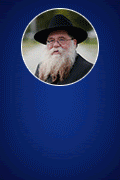
Jews in Sports: CHOICES – The Bedrock of Life
Life is full of options: Where we elect to go to school, send our kids to camp; Should we travel to a place where we can sun and surf, or hike and bike?
A decision we make at one stage in life will likely come full circle later on, as its impact on us is revealed.
All Western socialites are afforded this “choice” luxury. We can conform to society’s rules and regulations, trail-blaze our own track in the world, or find our niche somewhere in the middle.
Whether your name is Cohen, Goldberg, Jackson or Smith, you are empowered with your own ability of free choice.
But what to choose; which direction to go?
Such was the conundrum faced by the-then high-school aged Alan Veingrad; what to do?
The former National Football League offensive lineman faced a quandary when he was an adolescent: Get into organized high school sports or continue finding himself in trouble during his spare time?
By now, we’re sure, most reading this are aware of what he selected.
If you’re uninformed, allow us to divulge.
EARLY BEGINNINGS:
As an oft-in-trouble youth, Veingrad tells us, in a recent interview, he looked up to his older brother, who was then on his high school football team, and thought (to himself), “I want to be like him too, holding my head up high.”
So he joined the football squad.
As he neared high school graduation, he looked solid in uniform; tall, thick and muscular, but he was also slow, running football’s speed test 40-yard dash – the metric pigskin exam – in 5.3 seconds.
This fleet-footed facility is so sought after that a player could have all the intangibles ever wanted but without suitable speed, he is often-times deemed ‘unworthy.’
How would Alan ever get into a solid college, running a snail’s pace on his speed survey?
Leave it up to mom.
“When I told my mother that my high school resume looked solid,” recalls Veingrad, “I mentioned there was a problem with my 40-yard time.
“I informed her that if I were to run it in 4.9 (seconds), instead of 5.3, I might get some offers from colleges. She used white-out and replaced the 5.3 with a 4.9;” which proved easier to change than to actually accomplish.
In order to demonstrate to himself he could actually run the 120-foot distance in his mother’s-approved time, he found it incumbent upon himself to toil and log many hours of hard work in the gym and on the track.
“I worked out three hours per day, every day in college,” he explains. “Sometimes I ran multiple workouts in a day to improve my body for both size and speed. I did this until I was able to get into fine football form and prove to myself I could back up the number that was on my resume.”
NEARLY THERE:
Other roadblocks to the NFL persisted. Yet, Veingrad remained resolute and eventually found his way.
“I tried out for the Houston Oilers and Tampa Bay Buccaneers in 1985 to – at least – make the minimum contract,” the former lineman regales. “I was cut from both teams because I wasn’t good enough. I decided to go back to college to work on myself and become better equipped to pursue my dream.”
That he did.
First, though, additional gym hours were needed; more football techniques to be learned and absorbed. Veingrad also had to achieve an increased resistance-to-failure level in order for him to cross the final threshold and turn his dream into a reality; final destination: The NFL.
“When I heard my name on the loudspeaker on Opening Day the following season after all the additional effort I put in,” he remembers, “I knew I made it. That it came against the team that cut me (Oilers) the previous year made it all the more meaningful.”
CHANGE OF SCENERY:
Following his fifth season playing on the frozen tundra in Green Bay, the winds of change began blowing for the quarterback protector.
“My agent called informing me that the (Dallas) Cowboys were interested. But what got my attention was the mention of Dallas being a bigger city with a larger Jewish community than in Northern Wisconsin.
“I was 29-years-old at the time of my agents proclamation, that perhaps I would be more successful in finding a Jewish mate, and it was one of the many reasons I migrated south.”
When someone would tell a fellow minimally affiliated with his religion that one day he would become a devout observer, the reaction would likely elicit surprise, shock and, perhaps, disbelief.
What Alan – now “Shlomo” – did after he retired from the NFL is commendable. Having been brought up with a limited religious background and yet, today, it would be difficult to differentiate between him and another long-bearded, tall Jewish man.
There is something to be said of this; that is choice.
NEW BEGINNING:
“After retiring from football,” the former quarterback protector points out, “a relative of mine invited me over for Shabbat dinner. I took him up on the invitation only because he, as a doctor, helped me out with various medical questions I had during my football career and I viewed this more of a favor to him than anything else.”
After the first shabbat meal, Veingrad’s cousin was successful in convincing the now-retired footballer to attend one lecture.
“I didn’t find the class interesting,” he admits. “The rabbi attained my full attention, though, when he mentioned inspiration. He told me the Torah is a book of inspiration – a subject I take very seriously as I’ve studied it throughout my career – and now found myself devoid of it since retirement.
“We started hanging out a bit, the rabbi and I, and one thing led to another I eventually went to Israel and returned wearing the yarmulke and tzitzis – I bought there – slowly making changes.”
Making such a lifestyle change is surely not easy. But it’s fulfilling and commendable, yet, certainly arduous.
The choice made by Veingrad was to leave a life of comfort and pleasure and to plunge into a future of uncertainty. Leaving the “zone” of placation and entering a world vastly different to the one he knew all started with a fateful decision.
End this chapter of his life and begin anew.
FINAL THOUGHT:
“When I look back at what I’ve accomplished over my career,” notes Veingrad, “I’m happy with what I completed but also that I left the NFL when I did. I’m mentally here, in part, due to my decision to leave on ‘top of my game.’ I therefore have less permanent bumps and bruises than some of my former teammates who chose to play a few more seasons. That I had the mind to leave when I did I am very thankful.
“Concussions and other injuries – no matter how much players’ safety is improved – will remain a concern so long as players continue to throw themselves at each other running full speed. If someone wants to go down the professional football players’ path, find another career. That occupation – even if you can make it – will end very quickly.”
We look in the mirror, each one of us, and no matter where we turn we have two options; the judgment is ours to make.
Allow your decision to count for something; the choice is yours!













I like
nice article guys. good stuff!